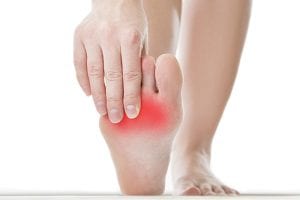According to researchers, sodium that is ingested generally through sodium chloride or salt may increase latent autoimmune diabetes and type 2 diabetes risk in adults. Type 2 diabetes is contracted by 95% of cases diagnosed. It characterizes abnormal blood sugar levels. Sodium and Diabetes are most certainly linked.
How can Sodium Increase your Risk of Diabetes?

Senior and middle aged people are found to contract this diabetes type mostly. LADA (latent autoimmune diabetes in adults) is another metabolic condition which often is misdiagnosed as type-2 diabetes. Later it appears in adulthood.
LADA is considered to be a disease that progresses very slowly and initially insulin treatment will not be necessary. Leading researchers can found to find out the impact that intake of sodium has upon LADA and type 2 diabetes risks.
Every Extra Gram Intake of Sodium Enhances Risk
Researches which have already been conducted have suggested that regular intake of sodium might increase significantly the risks to contract type 2 diabetes. The reason cited for the same is because sodium tends to impact greatly insulin resistance. At the same time, excess salt intake also causes gaining in body weight and hypertension. However, researches are yet to be conducted on the impact caused by intake of sodium on LADA risks.
The experts state that with LADA having autoimmune components, the diet comprising of high amounts of salt might only accelerate autoimmunity. It might also play a significant role in LADA pathogenesis (development of the disease). Unfortunately, there is found limited data on relationship between type 2 diabetes risk and sodium intake.
The experts analyzed data for Type 2 diabetes and LADA and went through data of huge number of people diagnosed with these diseases. The analysis results were then compared with findings availed from healthy group of people.
There were also used questionnaires to gather information pertaining to the daily diets of the participants. The team used this accumulated data to calculate the regular sodium, nutrient and caloric consumption of each and every participant. Genetic risk factors pertaining to diabetes were also taken into consideration.

The participants got split into ‘other’ and ‘high risk’ categories, which again depended upon their genetic profile. Moreover, confounding variables like BMI (Body Mass Index), gender, age, alcohol intake, physical activity levels and smoking was taken into account.
The result obtained was every additional gram of sodium intake (2.5 gms) per day was associated with 43% higher risk to contract type 2 diabetes. Again for LADA, the result obtained for every additional gram of sodium intake led to an increase of 73% to develop the condition.
The participants were then divided into 3 sub-groups depending upon their intake of sodium amounts. The categories were ‘low consumption’ (2.4 – 6 gms of sodium daily), ‘medium consumption’ (2.4 – 3.15 or around 7.9 gms of sodium daily) and ‘high consumption’ (3.15+ gms or over 7.9 gms of sodium daily).
The research results clearly showed that people belonging to the ‘high sodium consumption’ category were found to face 58% higher risks to contract type 2 diabetes, when compared to those in the ‘low sodium consumption’ group.
Again, those having high diabetes genetic risk and had daily high consumption of sodium intake were found to develop 4 times higher chances to contract LADA when compared to people in the ‘low sodium consumption’ category.
Check Out the Video Below for More about Sodium & Diabetes
Interaction Between Diet & Genetics
Based upon the above findings, researchers are now able to confirm a clear relationship between type 2 diabetes and sodium intake. They also conclude that high intake of sodium (salt) can prove to be risky for LADA. This is more so among high risk human leukocyte antigen (HLA) genotype carriers. They are rather the ones who already are found to carry significant genetic diabetes risks.
But a major limitation was noticed in the study, as the above conducted research was based upon questionnaires. There are chances of the participants to mis-remember few relevant details, thereby recalling bias. This in turn might have resulted in underestimation of sodium intake effects on type 2 diabetes risks and LADA.
According to the researchers, the main limitation is cited to be the retrospective design which could lead to recalling bias. Hence, to reduce such potential bias, questionnaire were given to patients being close to diagnosis. Clear instructions were also given to report their lifestyle/dietary habits prior to the diagnosis.
But still, it is not possible to rule out the recall bias. In case, it occurred, then it may result in underestimation of risk and not an overestimation of the results.
Further investigation conducted pertaining to interaction between genetic factors and diet with regards to diabetes can help reveal the different pathways to tackle this disease and to prevent it from occurring.
The researchers also revealed their interest to evaluate the different effects that might occur on reducing salt intake to prevent both types of diabetes.
Diabetic Neuropathy


Diabetic neuropathy is considered to be a nerve damage which takes place if you have contracted diabetes. Nerves all over your body may also get injured due to glucose (high blood sugar). Diabetic neuropathy is said to damage the nerves present in your feet and legs.
Diabetic neuropathy symptoms might range from numbness and pain felt in feet and legs to problems faced in the digestive system, heart, blood vessels and urinary tract. This again depends upon the affected nerves.
Some might show mild symptoms, while for others, it can be disabling and painful. It is stated to involve serious complication and is common. Healthy lifestyle and stringent control over blood sugar can slow down its progress or prevent it.
Symptoms of Neuropathy
Four major types are known to occur. You may have contracted one or may be more than a single neuropathy type. Symptoms will depend upon the nerves affected and type contracted. Symptoms generally develop gradually. Until there is experienced considerable nerve damage, you may not notice the problem.
Autonomic Neuropathy
Your bladder, heart, intestines, stomach, eyes and sex organs are controlled by autonomic nervous system. Diabetes might also affect nerves in these areas, thereby causing the following:
- Bladder issues, including urinary incontinence, retention or tract infections.
- Lack of awareness of having low blood sugar levels (hypoglycemia unawareness)
- Difficulty in swallowing
- Gastroparesis (slow stomach emptying) causing vomiting, nausea, loss of appetite and bloating.
- Uncontrolled diarrhea, constipation or even both.
- Problems faced with controlling body temperature
- Decreased or increased sweating
- Enhanced heart rate even during rest
- Changes as to how eyes make adjustments to dark from light.
- Erectile dysfunction
- Blood pressure experiencing sharp drops after standing or sitting, causing you to feel lightheaded or to faint.
- Reduced sexual response
- Vaginal dryness
Peripheral Neuropathy
It is stated to be a common type that affects the legs and feet first and then arms and hands. Its symptoms and signs only get worse at night and include the following:


- Reflex loss, mostly in ankle region
- Muscle weakness
- Enhanced sensitivity towards touch – for many, even the bedsheet’s weight can be painful.
- Cramps or pains
- Burning or tingling sensation
- Reduced ability in feeling pain, numbness or temperature changes
- Serious foot issues like infections, ulcers, joint and bone pain
- Loss of coordination and balance
Mononeuropathy
It is also referred to as focal neuropathy and may cause damage to any particular nerve in torso, leg or the face. Elderly people are likely to suffer the most. It occurs suddenly and may cause severe pain. But long term problems are not witnessed.
Even if treatment is not provided for weeks or months, the symptoms are still found to go away. However, your specific symptoms and signs will depend upon the nerve area involved. Pain may emerge in the following areas:
- Foot or shin
- Thigh front
- Pelvis or lower back
- Abdomen or chest
Nerve problems might also be caused in face and eyes, thereby causing the following:
- Bell’s palsy
- Severe aching just behind an eye
- Double vision
- Difficulty in focusing
At times, this ailment may occur due to nerve compression. A common compression type is carpal tunnel syndrome faced by those with diabetes. They may experience tingling or numbness in their fingers or hand, except the little finger. Also, weakness may be felt in the hands causing things to drop down.
Diabetic Amyotrophic (Radiculoplexus Naturopathy)
It affects nerves located in the legs, buttocks, hips or the thighs. People suffering from type 2 diabetes as well as elderly people are commonly affected with this type. It is also referred to as proximal neuropathy, femoral neuropathy or amyotrophy.
The symptoms experienced are generally on a particular side, with chances to spread to remaining parts of the body. You might develop the following:


- Weight loss
- If abdomen gets affected, then swelling in the region
- Difficulty in trying to stand up from sitting position
- Weak & shrinking thigh muscles
- Severe pain experienced in thigh, hip or buttock
In Conclusion
Sodium and Diabetes are connected because too much sodium can lead to diabetes, not to mention leading to high blood pressure as well. It’s important to monitor your intake of sodium and watch your blood sugars. Don’t let diabetes sneak up on you and get you. Be proactive and take care of your health!
- Amazon Kindle Edition
- Rothchild, Sascha (Author)
- English (Publication Language)
- 336 Pages - 04/19/2022 (Publication Date) - G.P. Putnam's Sons (Publisher)
- ✅ QUICK AND EASY TO USE: Care Touch blood sugar test kit delivers results in only 5 seconds with just a 0.5µL blood sample. There is no programming needed since our blood sugar monitor kit automatically recognizes batch codes encrypted on Care Touch glucose test strips. Our state-of-the-art glucometer kit with strips and lancets includes single-touch strip ejection, so you can hygienically remove used diabetic test strips.
- ✅ EASY DIABETIC MONITORING: The blood sugar monitor kit with strips is capable of saving up to 300 readings. The blood glucose test kit also provides a continuous 14-day average of your readings, making glucose monitoring easy for you and your healthcare provider.
- ✅ PORTABLE AND HASSLE-FREE: The diabetic testing kit comes with a handy glucometer case, which means you can check your blood sugar level at home or anywhere else while staying organized. The 10-depth lancing device and lancets will help make blood sugar testing almost painless and hassle-free.
- ✅ COMPLETE DIABETIC SET: The glucose meter kit with strips and lancets includes: (1) Care Touch Blood Sugar Meter, (100) Blood Glucose Test Strips for diabetes, (1) Lancing Device, (100) Lancets for diabetes testing, (1) 3 Volt Lithium Battery, (1) Glucose meter case for your blood sugar tester and diabetic supplies
- ✅ WE CARE BECAUSE YOU CARE: You care about your health, and we care about you. Care Touch is committed to providing the best quality blood glucose monitoring systems. Our care doesn’t end when your sugar tester diabetes kit arrives at your door. We’re fully dedicated to your satisfaction. If you have any questions or concerns about your glucose monitor kit with strips and lancets - contact us at any time.
- Amazon Prime Video (Video on Demand)
- English (Playback Language)
- English (Subtitle)
- PUREHEALTH RESEARCH - Blood Sugar Formula 3 Bottles
- MANUFACTURED in the USA! 365-DAY SATISFACTION GUARANTEED!
- A DOCTOR-APPROVED NATURAL FORMULA. Seventeen potent ingredients, each scientifically proven to have a significant effect at helping balance your glucose levels, improve glucose sensitivity, protect delicate cells from free radicals, and energy
- HIGH POTENCY. PureHealth Research experts scientifically enhance CHROMIUM with the Vitamin C, E, Mulberry Leaf, Bitter Melon, Cinnamon, L-Taurine, Berberin and other ingredients which are proven to help you support healthy blood glucose levels
- ONE CAPSULE DAILY, THREE BENEFITS: supports healthy sugar and carb absorption, supports insulin levels, supports cardiovascular health
- Scientifically formulated; great care was put into combining just the right amount of 20 different ingredients into a premium formula designed to support healthy blood sugar levels
- High potency support for 365 days a year; the unique combination in this blend is crafted to help support healthy glucose absorption and glucose production by your body; contains Gymnema, Alpha Lipoic Acid, Yarrow, Licorice, Cayenne, Banaba, Guggul, Bitter Melon, Juniper Berry, White Mulberry, L-Taurine & more
- One capsule twice a day, five benefits; (1) supports normal blood sugar levels; (2) supports weight control and energy; (3) supports healthy sugar and carb absorption; (4) supports insulin levels; (5) supports heart health; daily support for healthy blood glucose levels, 365 days a year
- Reliable; made in a GMP certified facility in America and third party safety tested for purity
- Great value for money; 120 vegetarian capsules for a 60 days supply
Last update on 2022-06-23 / Affiliate links / Images from Amazon Product Advertising API









What are the risks of having type 1 diabetes and the impacts of sodium? My dad has type 2 diabetes and he already has hypertension and a high bound of sodium chloride, the problem is that he doesn’t take care of himself. I always try to eat as healthy as I can and I always avoid using salt in any type of foods that I’m eating (asides from the one it already has). I have always been told by my endocrinologist that it’s not what you eat but how much of that said food you’re eating.
Hey Stephanie 🙂
Too much sodium isn’t healthy for you no matter what the case may be. It affects all diabetics regardless of what type you are.
One of the most influential impacts excess sodium has is your blood pressure and high blood pressure isn’t good especially when you have diabetes.
Yes, it would be easier if your dad did take care of himself. But our bodies do need some salt and I agree with your endocrinologist that it’s how much you are consuming that is detrimental to your health.
Thanks for sharing 🙂
Diabetes mellitus occurs when the body does not produce enough insulin to maintain normal blood sugar levels or when cells do not respond properly to insulin. People with type I diabetes (insulin dependent diabetes) produce little or no insulin. Although about 6% of the United States population has some form of diabetes, only about 10% of all diabetics have type I disease. Most people with type I diabetes develop the disease before the age of 30. Thanks for the post.
Hi Kozakiv 😃
The more we learn each day about diabetes the better off we are. Knowledge is power and the more we know the easier it is to treat this horrific disease.
It’s well known that too much sodium or too much sugar is just not good for us. It contributes to disease. We have control over it so why not take advantage of it?
Excess sodium also cause high blood pressure as well. So let’s cut down!
We can change these statistics one number at a time.
I appreciate your insight. Thanks!
Thanks for the article which I found to be very comprehensive. It would seem that all forms of diabetes are on the rise. An increased awareness about some of the things that we can do to combat this disease better still to prevent it is a great thing to contribute to.
I must say that the thoroughness with which you go into the subject is impressive. I learned quite a bit that I was unaware of despite always being aware of the risks associated with sodium intake generally
Thanks for adding to the body of knowledge in a simple way
Hi Hamish,
Thank you for saying 🙂 I’d like everyone with diabetes to know all there is to help prevent or control their diabetes.
Unfortunately diabetes is indeed on the rise. That’s why I try and provide positive information on my website about blood sugars and diabetes control.
Sodium is just one of many things that affects diabetes. In this case it also can raise your blood pressure and that too, ties into diabetes.
The quicker we get a grip on our dieting and exercise plan, the healthier we can become. So let’s watch that sodium intake.
Thank you for your comments 🙂
Thank you so much for sharing with us such a beautiful article .My dad is diabetic so I’m always aware. It’s like being in control and that’s why I was looking for some kind of article that I got today. Unless you read the article, I don’t know how sodium causes so much damage with diabetes. Today we learned that since we eat salt and my father consumes salt differently, it is how harmful it is. And his type 2 diabetes .As a result of this LADA disease progressed slowly and through your article I found out. My father takes insulin. And taking extra salt increases body weight and high blood pressure is actually very harmful to the body .And this results in an interaction between diet and genetics, which is extremely harmful .Diabetic neuropathy is considered as a neurological damage that occurs when an infection of the diabetes occurs. Glucose causes nerve injuries throughout the body and can result in nerve damage to the feet and feet. I did not read your article today about why my father had problems with his leg and his leg hurts. I put your article in the collection to show my dad in the future. And you certainly deserve the praise for such a superb informative article. Those of us who have diabetes should take care of it, as well as those who are healthy, should be aware that there will be no problems in the future.
Hi Shanta 🙂
You’re so welcome and thank you for saying! Sorry to hear that your dad is diabetic.
Yes salt and sodium do cause an enormous amount of problems for folks with diabetes.
Taking insulin is just necessary for so many people and increased levels of salt and sodium only make matters worse.
And I am well aware of neuropathy because I have it. It’s terrible but as I watch what I eat and reduce my sodium intake, it helps me.
It also cause high blood pressure and of course that’s not healthy either.
I do hope you pass this on to your dad and that it helps him.
Thank you for sharing! 🙂
Hi, sodium is something that we need to watch out for in our diets. There are some food that there with such high sodium that it provides your entire daily intake in one serving. For example Roman noodles. Not to mention fast food which people eat several days per week. As well as pizzas and in frozen foods. Sodium is high in most things, and people do not have the time to cook enough. Drinking lots of water, is it good way of flushing out the system. Avoiding junk Foods is also highly recommended.
Hey Jake,
Sodium definitely is something we must watch in our diets just like sugar. You are so right about so many foods containing sodium.
I agree that fast food is the worst when it comes to sodium content. It’s important to know what to stay away from and at the same time a smart choice to read labels.
When you cook as opposed to eating out, it’s a much healthier choice. Junk food is always a poor choice.
Drinking plenty of water is always the best choice no matter what the situation is.
Thank you for your comments. Much appreciated 🙂
I did not know that sodium and diabetes were related in any manner, nor that there was an effect on the nervous system with sodium. When I saw the title of this post, I was very curious to learn more. Diabetes runs in our family, so all of us siblings are watchful of our lifestyle, habits, and diet.
Once I started reading the reasons you have listed, it did make a lot of sense how they can be related (i.e. insulin resistance, high blood pressure, weight gain, etc.). I just never connected the two. Now that I am aware, I will be taking some action to lower my sodium intake (and will let my siblings know about this as well).
Another malady that I was not aware of is how there can be nerve damage with the onset of diabetes. The potential harm that this can cause is quite alarming. I most definitely will be tracking my sodium use more closely, as well as doing everything possible to prevent the onset of Diabetes of any sort, whether Type I, Type 2, or the LADA. Lots of good guidance here, thanks so much!
Hey Dave 🙂
It’s not necessarily true that sodium is bad for you as a diabetic. It’s like most other things, it’s TOO much sodium that is detrimental to your health.
There are many things that excess sodium can affect and blood pressure is one of them and that in turn affects diabetes.
I know all about nerve damage as well because I have neuropathy from diabetes which is why I am passionate about my website to help others learn and not suffer through the effects of diabetes.
It’s time we all took a look at our health and make the changes to avoid or control diabetes.
Your feedback is appreciated. thank you 🙂